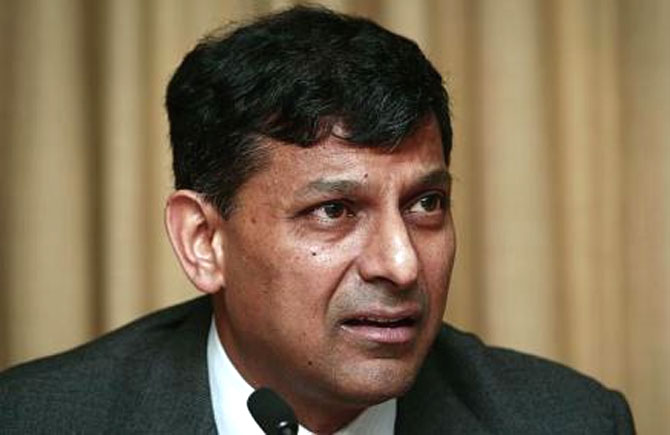Photographs: Arko Datta/Reuters BS Bureau
Given new data, a hike in the repo rate looks likely.
The last couple of days have produced data that potentially cause a dent in the otherwise growing confidence about the Indian economy stabilising.
First, the merchandise trade data for November indicated that export growth had slowed significantly when compared with the previous couple of months, clocking 5.9 per cent year on year.
This took the growth rate during the April-November period to 6.3 per cent — not too shabby, but not very inspiring either.
Then, the index of industrial production (IIP) data for October, which were published on Thursday, showed production contracting by 1.8 per cent, somewhat more than the market consensus.
…
A triple whammy for the Indian economy?
Photographs: Reuters
The manufacturing sector, which accounts for about 80 per cent of the index, declined by two per cent.
For the first six months of the year, then, industrial production was flat, while manufacturing output declined by 0.3 per cent.
Finally, inflation as measured by the new consumer price index (CPI) accelerated to 11.24 per cent, with food inflation overall crossing the 14 per cent mark and vegetable prices rising by over 60 per cent.
Importantly, excluding food and energy, core consumer inflation still came in close to nine per cent. In a nutshell, the industrial sector of the economy is not growing, whatever momentum came from exports in the past few months appears to be fading, and consumer inflation – both food and others – is showing extreme stubbornness.
…
A triple whammy for the Indian economy?
Photographs: Reuters
Of course, the story is not all bleak. Imports have actually declined in absolute terms, by a significant 16.4 per cent year on year.
This has contributed to the trade deficit for the April-November period being about $30 billion lower than it was during the corresponding period of last year.
This, in turn, will feed into a smaller current account deficit for the year, significantly easing the downward pressure on the rupee even as the prospects of the US taper come closer.
On the industrial production front, certain sectors like garments and electrical machinery are experiencing reasonably healthy growth amidst otherwise discouraging performances.
…
A triple whammy for the Indian economy?
Image: Raghuram Rajan.Photographs: Reuters
The first is consistent with the export recovery, while the second suggests some persistence of capital expenditure, even if large greenfield projects are off the table for the moment.
On the inflation front, protein inflation is, as it has been for a few months, relatively subdued, suggesting a narrowing demand-supply gap.
This is the backdrop in which the mid-quarter monetary policy decision will be taken next week.
Going by Reserve Bank of India Governor Raghuram Rajan’s statements over the past three months, the dominant consideration will be the acceleration in inflation, including the hardening of the core; on this basis, another hike in the repo rate now becomes the most likely outcome.
…
A triple whammy for the Indian economy?
Photographs: Reuters
The deceleration in industrial production may provide a basis for maintaining the status quo, but Dr Rajan will likely see a risk here of signalling an acceptance of an inflation threshold of 11 per cent plus — which could be acceptable to him only if a sharp drop-off in inflation can be expected in the next few months.
Unfortunately, there is no such prospect in sight. The persistence of food inflation is virtually strangulating any flexibility that monetary policy has, while at the same time retarding the effectiveness of the tight policy stance on headline inflation.
This, in turn, could adversely impact both export and overall growth.






article